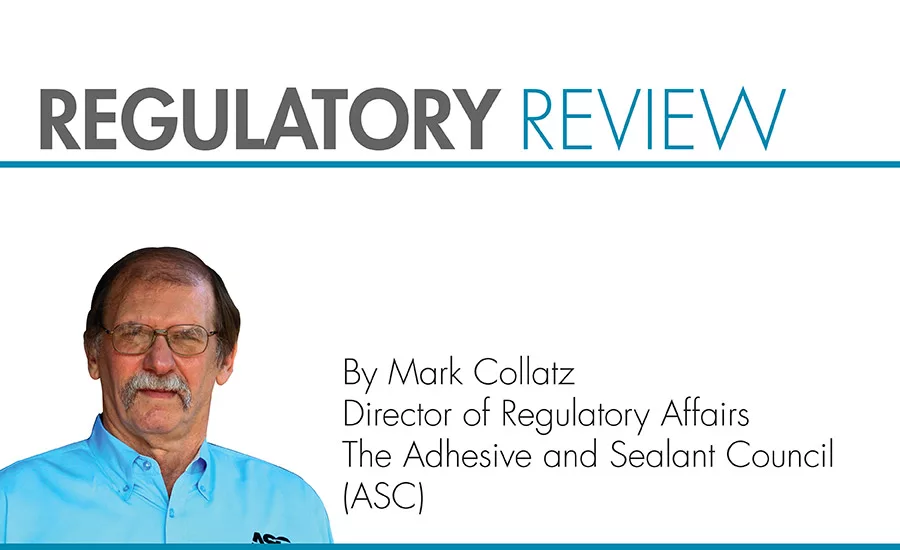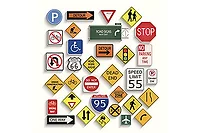Regulatory Review: New SDSs and Labels for GHS Compliance - Don't Panic Yet
Adhesive and sealant formulators still have time to square away everything they need for developing accurate SDSs and labels to meet GHS standards.

Flipping the calendar to June 2015 has provided the kind of dread that can only be rivaled by scheduled root canal work or an IRS audit—especially for those who deal with dual Environment, Health and Safety (EH&S) and shipping responsibilities within their company. June 1 was the date mandated by the Occupational Health and Safety Administration (OSHA) for all chemical suppliers and formulators to be compliant with new safety data sheet (SDS) and label requirements for the new Global Harmonization System (GHS), which was adopted in 2012.
During the GHS discussion phase of the regulatory proposal process, the Adhesive and Sealant Council (ASC) made a point of urging that implementation of the new rule be phased in to allow chemical manufacturers to first get their labels and paperwork in order. This would allow formulators adequate time to receive the needed data from their suppliers to create their own SDSs and labels. For whatever reason, OSHA failed to heed our warning that they were creating a compliance logjam that could be impossible for some companies to navigate.
As our members began to work through various GHS compliance requirements, it didn’t take long for us to begin hearing about the challenges some companies were going to be facing as they collected information from supplier companies to properly label and provide safe data for sometimes hundreds of product offerings. Last fall, the ASC and several other associations representing the formulator community formally petitioned OSHA to provide downstream manufacturers with relief by pushing their compliance date back to 2017. In addition, we had face-to-face meetings with OSHA personnel. While we didn’t get the originally asked-for extension, the agency did make some significant concessions and—just as importantly—put them in writing.
This enforcement guidance lays out in black and white what inspections officers should be looking for to demonstrate due diligent efforts by manufacturers to obtain chemical hazard information from those companies farther up the supply chain. (The enforcement guideline can be found at www.osha.gov/dep/enforcement/hazcom_enforcement-memo.html.)The agency document defines what will demonstrate “reasonable diligence” and “good faith efforts.” The guidance concludes that OSHA inspectors will expect a manufacturer to provide documentation of its efforts to:
• Obtain classification information and SDSs from upstream suppliers
• Find hazard information from alternative suppliers (chemical registries)
• Classify the data themselves
I think the important take-away from this is that it is unlikely an OSHA inspector will simply accept the excuse that a manufacturer asked his upstream supplier for this information and it wasn’t provided. OSHA is going to be looking for convincing evidence that formulators have made—and documented—some effort on their own to come up with that information.
With regard to drop-dead dates, OSHA now says that manufacturers have six months after they get all relevant information on a particular product to complete and publish an SDS for the product—and another six months to have the product labeled. This says to me that manufacturers should document dates when all information is in their hands for the development of the safety information because that will, to an OSHA inspector, serve as starting the final clock for creating SDSs and labels for that particular product.
In addition, it is also important as a formulator that you let your customers know what is happening. While OSHA has granted you more time through its inspection procedures, your customers will most likely be unaware of that reprieve. Share with them some of the challenges you may be having in obtaining information from your suppliers and let them know you are working as quickly as possible to update the information you provide them. You may even want to point them to the OSHA guidance document.
In addition, it is probably important that you keep a hard copy of the OSHA enforcement guidance in your shipping department just in case some of the companies that handle the transportation of your products raise questions about why the new GHS pictograms or label language are not displayed on your packaging. This enforcement directive should give adhesive and sealant formulators the time to square away everything they need for developing accurate SDSs and labels without having to worry about an OSHA inspector challenging their commitment to compliance with the new GHS regulations.
Any views or opinions expressed in this column are those of the author and do not represent those of ASI, its staff, Editorial Advisory Board or BNP Media.
Looking for a reprint of this article?
From high-res PDFs to custom plaques, order your copy today!





